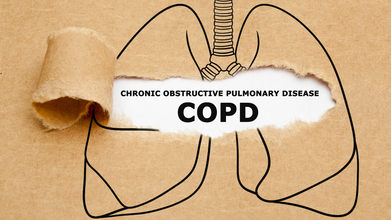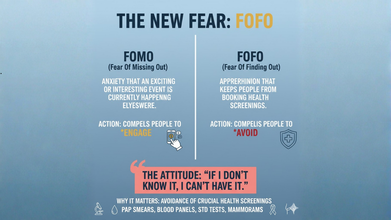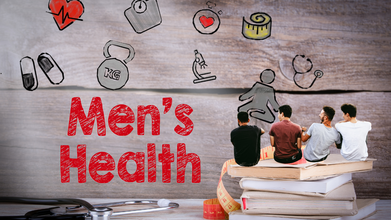- Health Conditions A-Z
- Health & Wellness
- Nutrition
- Fitness
- Health News
- Ayurveda
- Videos
- Medicine A-Z
- Parenting
‘It Feels Like The Safety Of Childhood’: Why Adult Pacifiers In China Are Helping People Quit Smoking, Sleep Better And Stress Less?

Credits: Canva
In China, a new trend is reshaping adult coping culture and it’s not herbal tea, meditation apps, or plush toys. It’s adult-sized pacifiers. Once the domain of babies, these silicone soothers have found a surprising audience among stressed-out grown-ups looking for calm, better sleep, or even help quitting smoking.
Available on platforms like Taobao and JD.com for as little as 10 yuan ($1.40) and as much as 500 yuan ($70), they’re marketed with a wellness twist: stress relievers, sleep aids, even bite guards to prevent teeth grinding. Some users swear they help curb late-night snacking or silence a snoring partner. And they’re selling fast! According to South China Morning Post, top vendors are moving thousands every month.
The phenomenon has exploded on Chinese social media. On Sina Weibo, hashtags related to “adult pacifiers” have racked up over 68 million views. Douyin (China’s TikTok) is packed with short videos of young people unboxing, testing, and explaining why they’ve embraced the trend. The most popular pacifiers measure 4.5 centimeters—nearly twice the size of those for infants—and are designed for adult mouths.
For some, it’s about breaking a habit. A Douyin user credited the pacifier with stopping her constant snacking, claiming it even helped with weight loss. Another posted that it helped her finally quit smoking after years of failed attempts. Many describe the sensation as instantly calming, a tactile anchor in a chaotic day.
Is This A Use Of Regression As A Coping Mechanism?
Psychologists point to the “regression phenomenon” to explain why this works for some. When stress overwhelms, people may subconsciously revert to behaviors from an earlier, more secure stage of life. In infancy, sucking is a natural source of comfort and self-soothing. For adults, the pacifier becomes a symbolic return to a time without deadlines, bills, or complex emotional burdens.
“It feels like the safety of childhood,” one office worker wrote in an online review. That feeling can be powerful—especially in high-pressure work environments where people struggle to find moments of rest.
Is Any Medical Caution Needed?
Not everyone is convinced this is harmless. Dentists like Tang Caomin warn that prolonged use can shift teeth, limit jaw movement, and cause temporomandibular joint (TMJ) issues. There’s also a risk of sleep disruption or choking if parts come loose during the night. Wang Xueling, director of stomatology at the Aerospace Center Hospital in Beijing, notes that while pacifiers can offer temporary emotional relief, they don’t address the underlying causes of stress.
Psychologist Zhang Mo is more direct: “The real solution is not to treat yourself as a child, but to face the challenge directly.”
This isn’t staying in China. On TikTok, American users have begun posting clips of themselves with adult pacifiers—in traffic, at work, or during intense moments of burnout. Some claim it helps with ADHD-related restlessness, while others admit it’s simply a private comfort they’ve used for years.
A commenter averred to having used pacifiers for 23 years, and another dismissed worries about dental effect: "It hasn't moved my teeth, been using them for 4 years." Nevertheless, critics propose alternatives such as chewing gum or lollipops to meet the same oral fixation without risking dental damage.
It's not just an object that the adult pacifier trend represents; it is what the object stands for. In the face of economic insecurity, social pressure, and constant digital overstimulation, small rituals that give control or comfort can become very attractive. For many, this has been a private rebellion against relentless productivity culture, reminding them that it's okay to need comfort-even if it looks unconventional.
Why Adults Are Reaching for Pacifiers?
The oral fixation and emotional regression psychology lies at the root of this phenomenon. Psychoanalytic theory has it that in the course of human development, the oral stage marks the earliest point. This is where sucking, eating, and all else related to the mouth takes precedence for comfort and bonding purposes. When adults experience stress beyond their coping ability, they may respond unconsciously by regressing to behaviors associated with this stage—behaviors that once consistently brought feelings of safety.
In today's language, this is a type of "self-soothing." Similar to chewing on a pen cap, biting one's nails, or drinking from a straw, pacifier use involves sensory pathways that quiet the nervous system. The rhythmic, repetitive motion can relax breathing, decelerate heart rate, and generate an inconspicuous feedback loop that communicates relaxation to the brain.
But there's an important difference between temporary relief and addiction. Whereas brief use may alleviate anxiety or cut addictive habits like smoking, heavy reliance on such aids can cover up underlying problems—long-term stress, sleep disorders, unresolved emotional trauma—that need more engaged solutions. Therapists warn that such behaviors are better understood as adjunctive coping strategies, not substitutes for solving core issues.
That is, the pacifier can get you through a long commute or a stressful meeting. But it won't address the situation that's causing you to need one in the first place. The true test—and challenge—are in figuring out how to introduce some of that same sense of security into your life without resorting to a silicone substitute.
Why COPD Is Now Affecting People in Their 20s and 30s

Credits: Canva
Chronic obstructive pulmonary disease (COPD) has long been seen as a condition of older adults, typically tied to years of smoking. But across India, pulmonologists are increasingly diagnosing it in people in their 20s and 30s. This shift, experts say, reflects a deeper and more troubling change: young adults are growing up and living in environments where the lungs never truly get a chance to breathe clean air.
A Shift From “Smoker’s Disease” to “Exposure Disease”
The biggest change is the cause itself. As Dr. Raja Dhar, Director & HOD, Pulmonology, CK Birla Hospitals, CMRI Kolkata, explains, “COPD is increasingly becoming an ‘exposure disease’ rather than a ‘smoker’s disease.’ In India, non-smoking COPD is numerically a much larger problem.”
This exposure begins early—sometimes in childhood.
Dr. Dhar highlights how even limited exposure can have lifelong consequences: “Severe airway obstruction can be traced back to just six to seven years of biomass smoke exposure in a poorly ventilated kitchen during a child’s formative years.”
Dr. Harshil Alwani, Consultant – Pulmonology, CK Birla Hospitals, Jaipur, also points to the changing risk profile. According to him, “newer epidemiological data show that non-smoking drivers—especially air pollution and occupational exposures—are playing a disproportionately large role in younger people.” He adds that rapid urbanisation means more young adults are chronically breathing polluted air from childhood onwards.
Improved diagnosis and greater awareness also mean younger patients with persistent symptoms are now being evaluated more often, he notes.
Beyond Smoking: The Real Culprits Behind Early COPD
Air Pollution
Both experts agree that polluted air is the biggest trigger today. Dr. Alwani explains that long-term exposure to PM₂.₅ is directly linked to lung decline and COPD. “Recent research shows that temperature and humidity modulate the harmful effect of PM₂.₅, making COPD risk worse under certain climatic conditions,” he says.
Dr. Dhar adds that India’s air quality is deteriorating nationwide: “Ambient outdoor air pollution is a severe risk, as air quality across 98% of India is worse than WHO standards.”
Indoor Pollution
Household pollution remains a massive issue. Biomass fuel used for cooking is, as Dr. Dhar puts it, “the largest non-smoking contributor, resulting in numbers approximately three times that of smoking-related COPD.”
Occupational Hazards
Young adults working in construction, mining, welding, or factory settings face daily exposure to dust, fumes, and chemicals. Dr. Alwani notes that such environments “carry a significantly increased risk.”
Childhood Lung Infections
Recurrent infections can impair lung development and reduce lung reserve, making early-onset disease more likely.
Genetic Factors
Conditions like alpha-1 antitrypsin deficiency, though rare, still contribute when combined with environmental triggers.
Delhi’s Winter Pollution: A Direct Route to Lung Damage
Every winter, Delhi’s smog becomes a health emergency. According to Dr. Dhar, “High winter pollution, particularly hazardous levels of PM2.5, acts as a chronic, low-grade chemical burn on the young respiratory system.”
Dr. Alwani adds that winter inversion traps pollutants closer to the ground, amplifying PM₂.₅’s damage.
The Vaping Problem
Vaping and e-cigarettes, widely perceived as harmless, have added a new layer of risk. Dr. Alwani warns, “Vaping is not benign. Its aerosols contain volatile compounds, heavy metals, and ultrafine particles that trigger inflammation and oxidative stress—central pathways to COPD.”
Dr. Dhar echoes this concern: “Any inhalation of heated chemical aerosols is a significant lung irritant and pro-inflammatory agent.”
Symptoms Young Adults Should Never Ignore
Doctors urge young adults not to dismiss symptoms like:
- Persistent cough
- Breathlessness during routine activity
- Wheezing or chest tightness
- Frequent colds or bronchitis
- Fatigue or reduced stamina
Why Early Diagnosis Matters
Early spirometry can dramatically change outcomes. As Dr. Dhar puts it, “Early intervention allows us to remove the source of exposure and start therapy, which can effectively preserve the patient’s remaining lung function.”
Dr. Alwani adds that catching the disease early can “significantly slow further lung damage” and prevent long-term complications.
FOFO (Not FOMO) Is The New Psychological Barrier That’s Fueling a Drop In Health Screenings

Credits: AI-generated
We all know the feeling of FOMO, the fear of missing out, but there exist another fear, this is FOFO: the fear of finding out. This apprehension is what keeps people from boking their health screenings. The horrors of what will happen after a mammogram, a Pap smear, an STD test, blood panel, or even something as simple as a blood pressure check can scare those with FOFO.
While the term itself is not a medical diagnosis, it is a widely recognized behavioral pattern that both patients and doctors get to see frequently. Over the years, it has gained more attention among experts who deal with health anxiety. As one clinical psychologist explains, there isn’t much published research on FOFO, but practitioners who work with health-related anxiety are very familiar with its impact.
What is even worrying is how common this avoidance has become. As per a 2025 survey of 2,000 employed US adults, 3 out 5 avoid medical screenings altogether, due to fear of bad news or embarrassment. Another 2025 reveal that of 7,000 adults, only 51% attended a routine medical appointment of cancer screening, with a 10% drop from 2024.
The attitude is: "If I don't know it, I can't have it".
Where Does FOFO Come From?
According to psychologists, FOFO often roots itself in anxiety and the desire for control. When something feels uncertain—like a health test result—many people instinctively avoid it. Avoidance becomes a way to quiet the anxiety, at least temporarily.
Experts say FOFO is especially common in people with generalized anxiety disorder, OCD, or illness anxiety disorder. But anyone can experience it. For some, it’s a one-off situation—like hesitating over a prostate exam. For others, it’s part of a broader coping style that involves avoiding anything that feels threatening. Ironically, this sometimes goes hand in hand with endlessly checking symptoms online.
Previous negative experiences in healthcare settings can also feed FOFO. Some people feel anxious around doctors or medical procedures, while others fear being judged, especially when a screening could uncover conditions that carry social stigma—such as STDs. There’s also the fear of receiving results that might force lifestyle changes or treatments they’re not ready for.
A common unspoken belief behind FOFO is:
“If I don’t take the test, then the problem doesn’t exist.”
Waiting for test results adds to the anxiety too. When results take days or weeks, the uncertainty can feel more stressful than the test itself.
How Can You Break The FOFO Cycle?
The first step is by acknowledging what is at stake. Many experts recommend weighing the pros and cons of taking the test versus avoiding it. If FOFO is holding you back, ask yourself what exactly you’re afraid of. Many people underestimate their ability to handle bad news. Understanding this can help reduce the emotional weight of screening.
It’s also helpful to reflect on a few important questions:
- Do I want fear to dictate my health choices?
- What could happen if I keep putting this off?
- A year from now, will I regret not acting today?
These questions often shift the focus from fear to long-term wellbeing. As psychologists note, facing the fear usually leads to decisions that better align with your values.
International Men's Day: Millions of Men May Be Living With Undetected Autoimmune Disorders, Know What They Are

Credits: Canva
On International Men's Day, we shift our focus on men's health and why is it important to talk about it. Time and again experts, doctors, and studies have shared how men generally visit GPs less than women. As per the NIH, US, the consultation rate is 32% lower in men than women. The difference is often attributed to a combination of women being more willing to admit sickness and seek help, while cultural factors and barriers for men keep them away from seeking help. However, not anymore, because both sexes require help when they need, especially when it is about their health.
Also Read: The Kessler Twins Die By Assisted Suicide in Germany; How It Differs From Euthanasia
As per a 2024 study published in the Journal of Clinical Investigation, about 5.7 million men could be living with an autoimmune disease that they do not even know about. The disease in men are often overlooked, all thanks to the social barriers.
Sex chromosomes play a key role in predisposing men or women to an autoimmune disease. Females have XX chromosomes, while male have XY chromosome and each chromosome carries gene sequence, which means specific pieces of DNA. Since X chromosome carries a bunch of gene related immunity,, having two of them could explain why women often have a higher rate of autoimmune diseases.
However, men are less likely to book time with their doctors, which could impact the discrepancies between sexes. They could thus often be undiagnosed or could flag their symptoms only when the disease has progressed.
Four Autoimmune Diseases Men Should Be Aware Of
Psoriasis
This is an inflammatory skin condition which affects both men and women. However, studies including the one published in 2023 in the International Journal of Women's Dermatology have suggested that men could develop this condition near their genitals and butt than women.
Also Read: Delhiites, Skip Your Morning Walk, You May Be Inhaling 3x Toxic Air Than Usual, According To Doctor
Ankylosing Spondylitis or AS
As happens due to the inflammation of the spine's joints and ligaments and could cause back pain and stiffness. While the condition is rare in itself, it could affect men more than women, that too at a younger age, usually below 40. A South Korean study from 2018, published in Scientific Reports, AS was 3.6 times more prevalent in men than women.
Type 1 Diabetes
The 2018 report by the Centers for Disease Control and Prevention, (CDC), US, provides data that type 1 diabetes may be slightly more in common in men than women. Though, other studies have been a mixed bag. Unlike type 2 diabetes, type 1 is an autoimmune disease, which means, here immune system attacks are specialized. What men should know is that both types of diabetes could up their risk of erectile dysfunction (ED) due to persistently high blood sugar, which could harm their nerves and blood vessels.
A 2016 study published in the International Journal of Impotence Research found that nearly 60% of 151 men being treated for type 1 diabetes had mild ED.
Inflammatory Bowel Disease (IBD)
The most common forms are Crohn's disease and ulcerative colitis, that take hold of digestive system. Chronic inflammation in the gut spikes the risk of colorectal cancer, which is one of the leading cause of death in men between 20 to 49 of ages. In fact, a 2023 study published in the journal Cancers noted that men with IBD faced a higher risk of developing colorectal cancer than women with IBD.
© 2024 Bennett, Coleman & Company Limited

